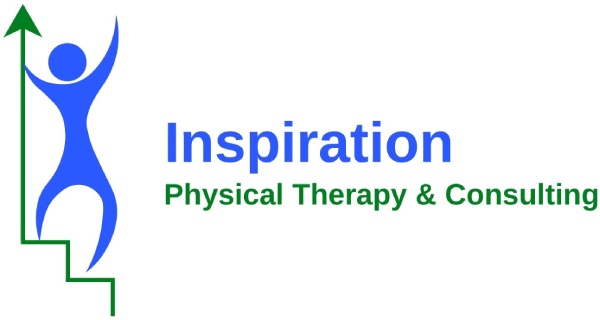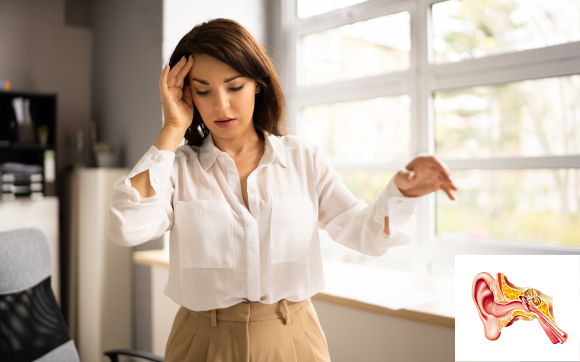Vestibular Therapy / VRT
Your vestibular system helps you balance and stay upright while standing and walking. Your vestibular system can get weak like a muscle can get weak (this is called decreased vestibular gain.) This may lead to dizziness, decreased balance/falls and vertigo. VRT is vestibular rehabilitation training.
What’s vertigo? Isn’t that just another word for dizzy?
Vertigo is specifically the feeling of the room spinning or of you spinning. This commonly occurs if you have a crystal out of place in your inner ear, or BPPV
What is BPPV?
Benign Paroxysmal Positional Vertigo (there is a reason we call it BPPV!) is the feeling of the the room spinning that is caused by moving your head. You have crystals in your inner ear that have hairs on them that are activated/ turned on or deactivated / turned off when you turn your head. These crystals send a signal to your brain what position your head is in in space.
In BPPV, one or more of the crystal becomes dislodged from its normal spot in the semicircular canals of your inner ear. This crystal tries to do its job by sending the message where your head is, but the dislodged crystal is sending the wrong signal because it is out of place.
Your brain does not know how to process this and has the response of vertigo.
How do I treat it?
Fortunately, most BPPV is treatable in just a few PT sessions! There are specific maneuvers that your PT can use to put the crystal or canalith back in place depending on which of the semicircular canals it is in! The most common of these maneuvers is the Epley maneuver, which can be done in the office or at your home. Another term for these maneuvers is canalith repositioning.
What if I am just lightheaded?
Lightheadedness can be caused by several different factors including orthostatic hypotension, changes in blood pressure, not eating enough and more. Your medical doctor and your PT can work together to help you figure out the cause!
The room isn’t spinning, but it feels like I am on a boat….
This is called oscillopsia and is the feeling of your gaze not being able to stabilize. The good news is that Physical Therapy can help with this too! Your PT can teach you specific gaze stabilization exercises to retrain your vestibular system’s connection with your brain!
What is habituation training?
Habituation training is actually exactly what it sounds like! When your dizziness doesn’t improve with canalith repositioning or gaze stabilization, sometimes we just need to retrain the whole system. This means attempts the activities that make you dizzy over and over again (getting your vestibular system used to this “habit.”) The key is finding how to retrain the system without overdoing it. This is where skilled PT assessment and treatment come in. Just like you are training a muscle at the gym, you can overdo a session and be sore for days! It’s the same with your vestibular system, except you may have increased dizziness instead!
Potential Injuries
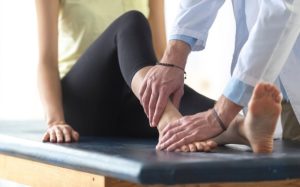
Sprains
A sprain occurs when a ligament, the tissue that connects bones to bones, is stretched or injured. A common example is an ankle sprain, often caused by the twisting of the ankle. In our physical therapy practice, treatment for ankle sprains is highly personalized. We focus on addressing muscle weakness, improving balance, enhancing proprioception (your sense of body position), and providing functional activity training to aid recovery.

Strain
A strain happens when a muscle or muscle tendon, the connective tissue linking muscle to bone, is stretched or injured. You may have heard of it as a "hamstring strain" or "pulling a muscle." Our physical therapy approach is tailored to your unique needs. Treatment typically includes gentle stretching of the affected muscles, manual techniques to expedite recovery, and gradually introducing strengthening and stabilization exercises, all customized to your progress and requirements.
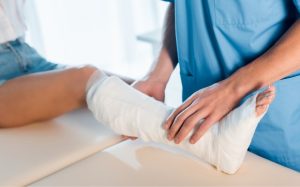
Fracture or Broken Bone
A fracture, commonly known as a broken bone, occurs when a bone cracks or fully separates. Initially, medical doctors may immobilize the bone with a cast, sling, or even surgery involving rods and screws. Physical therapy usually comes into play once some healing occurs, typically taking 8-10 weeks. Our physical therapists create individualized plans focused on improving your range of motion, strengthening the muscles around the injury, reducing compensations, and facilitating your return to daily activities according to your specific goals.

Pre-operative PT
In some cases, surgeons recommend physical therapy before surgery. This pre-operative physical therapy enhances strength, range of motion, and flexibility. It often leads to better post-operative outcomes and faster recoveries. Typically, pre-operative physical therapy involves a few sessions in the weeks leading up to your surgery. However, additional sessions may be necessary in certain situations, especially when surgery is avoidable or significant muscle and joint limitations exist.

Falls
Falls can result from various factors, including both external and internal causes. External factors encompass issues like low lighting, uneven surfaces, tripping hazards, and collisions with objects or individuals. Internal factors may include:
- Decreased proprioception: Your sense of body position in space.
- Vestibular issues: Pertaining to your inner ear's sense of head position, movement, and its communication with your brain and body.
- Decreased muscle strength: Certain muscles play a crucial role in maintaining balance. Weakness in these muscles can lead to imbalances and falls.
- Vision issues: Impaired vision can affect your ability to perceive your surroundings. While physical therapy doesn't directly address vision problems, we strengthen the systems contributing to balance. Additionally, we offer recommendations to modify your home environment to reduce fall risks.
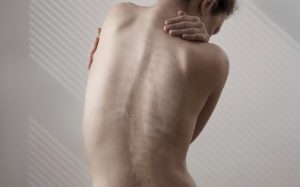
Scoliosis
Scoliosis is an abnormal curvature of your spine, often resembling a "C" or "S" shape. Diagnosis typically involves an in-office examination and confirmation through X-rays. While severe scoliosis may require surgery due to potential effects on the ribs and lungs, mild to moderate cases often benefit from physical therapy. Our approach includes assessing your posture, daily activities, range of motion, mid-back strength, and postural muscles. Based on these findings, our physical therapists create an individualized plan tailored to your needs.

Ligament Injuries
Ligaments connect bone to bone and can get injured through falls, sports impacts, motor vehicle accidents, or prolonged stress. Ligaments can stretch, sprain, tear, and more. Physical therapy focuses on reducing initial stress on the injured area and strengthening the muscles around it. We align our treatment with your goals for returning to your desired activities.
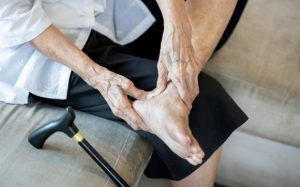
Tendon Injuries
Tendons connect muscles to bones and can sustain injuries from sports, falls, accidents, or everyday activities. Tendons may stretch, tighten, become injured, not glide properly, tear partially, fully, or retract. Physical therapy provides conservative management for tendon injuries. Our approach addresses tightness, and compensatory movement patterns, strengthens surrounding areas, and aids your return to daily life and function.
